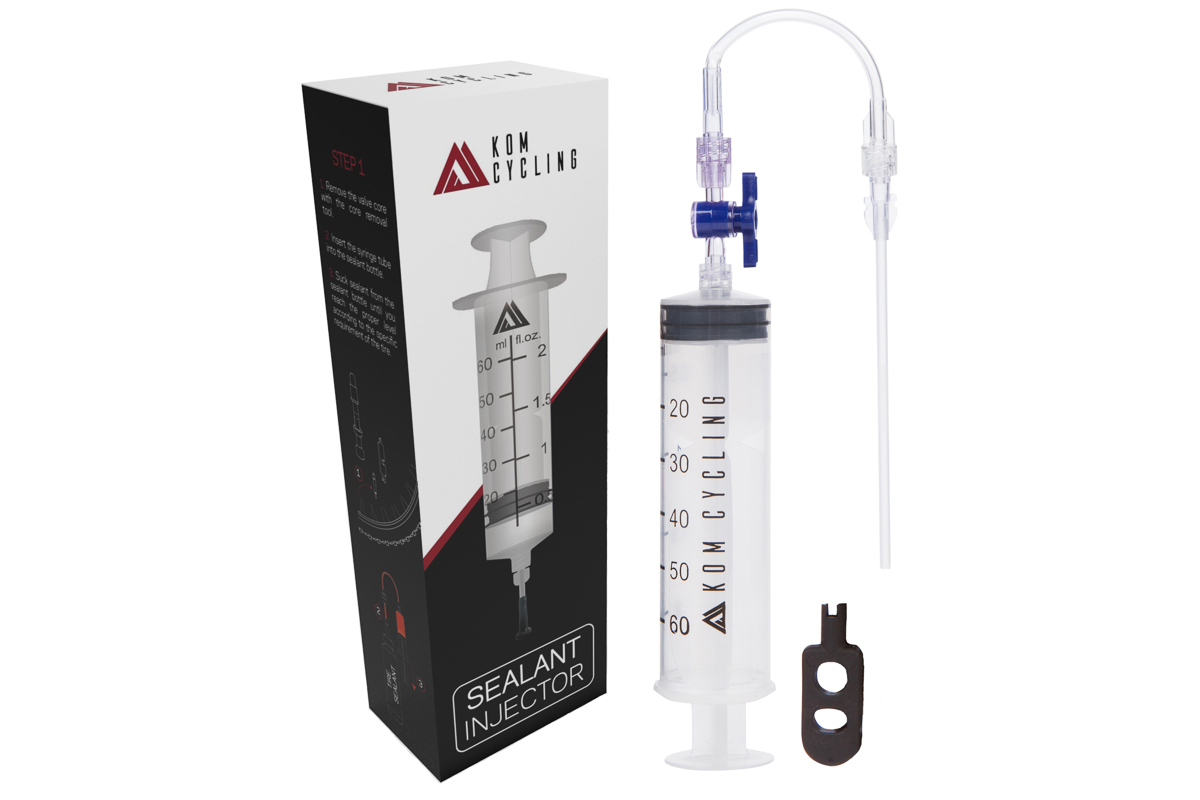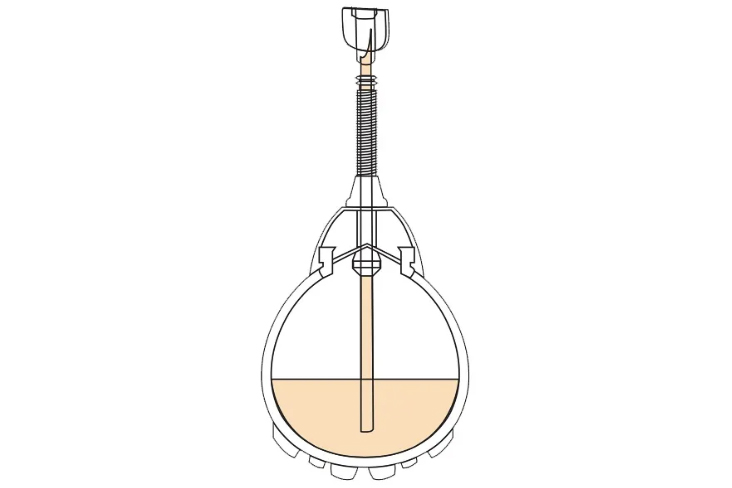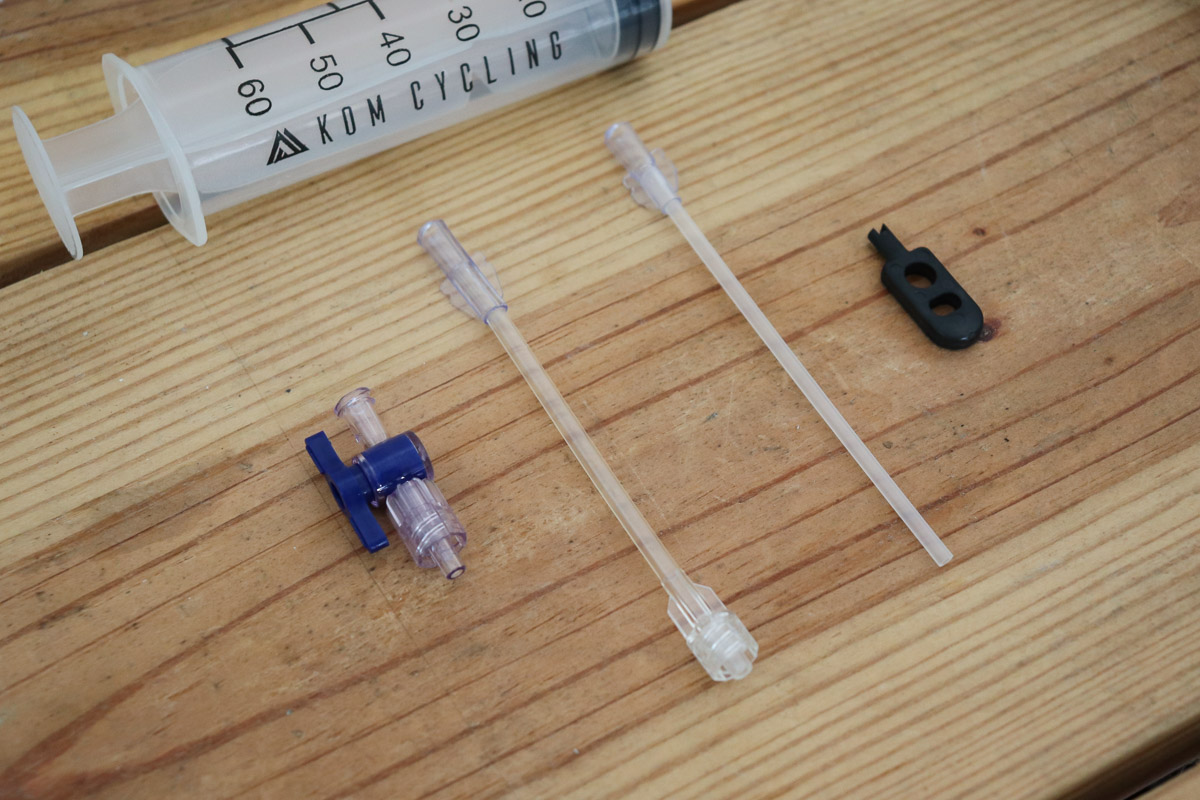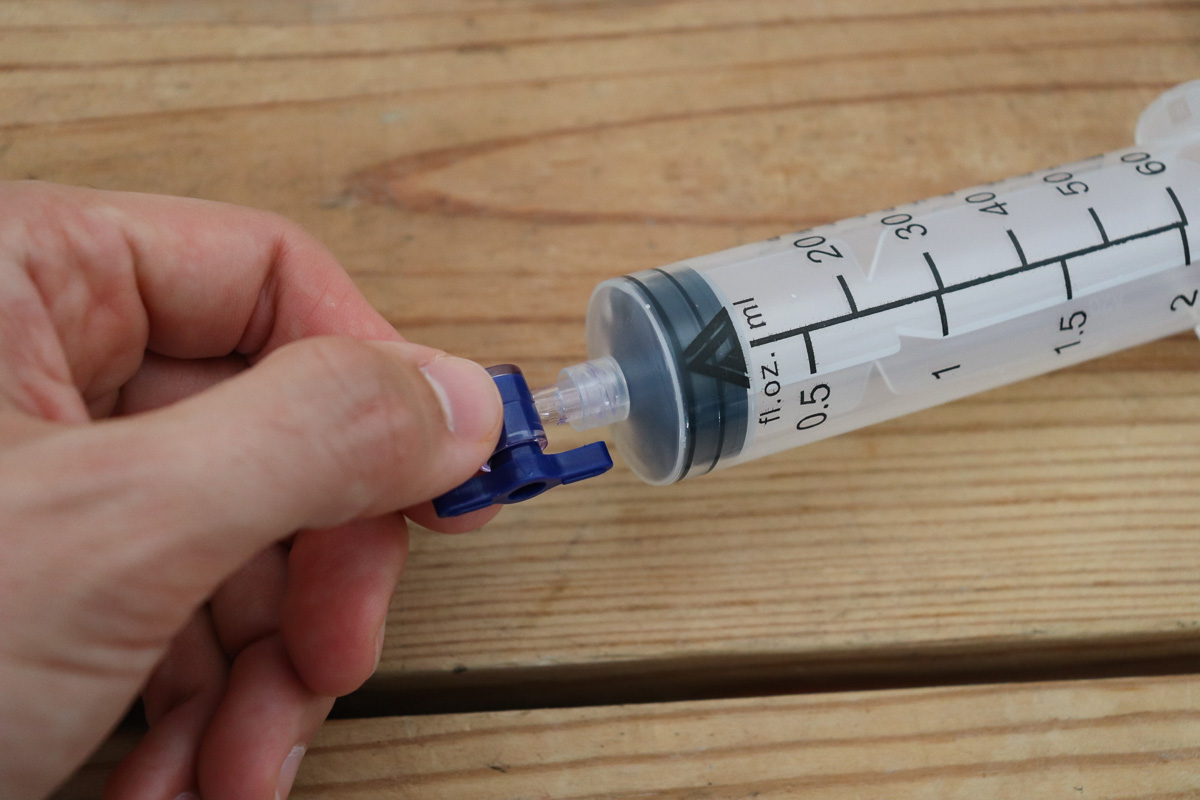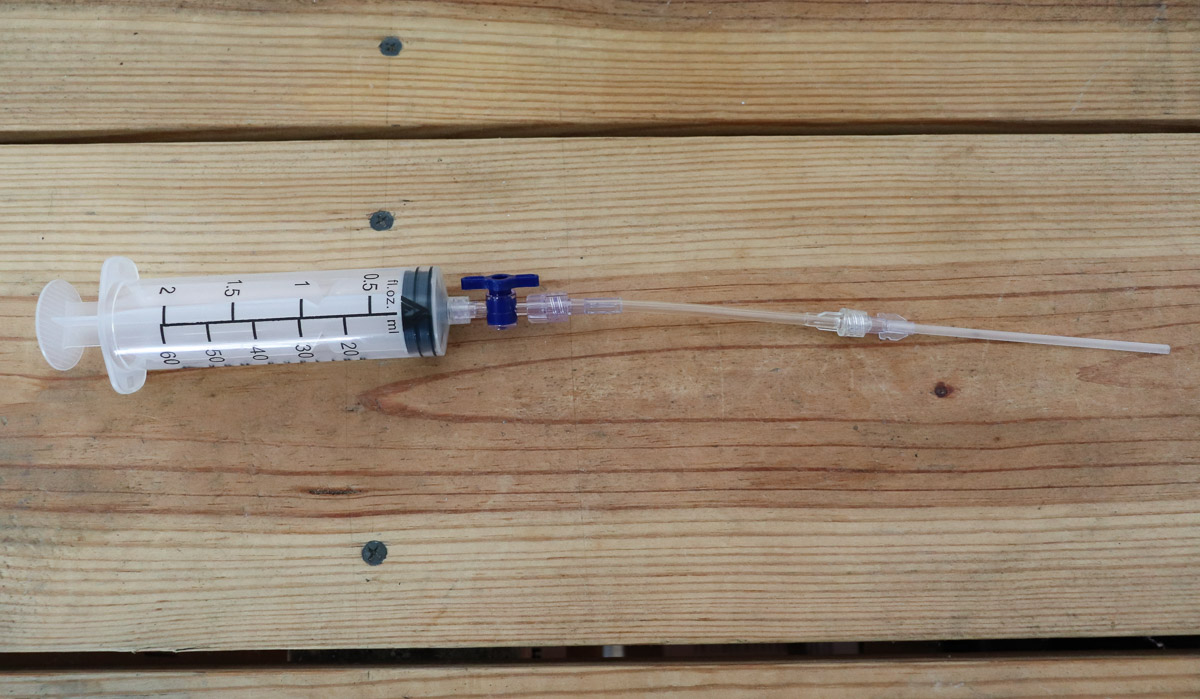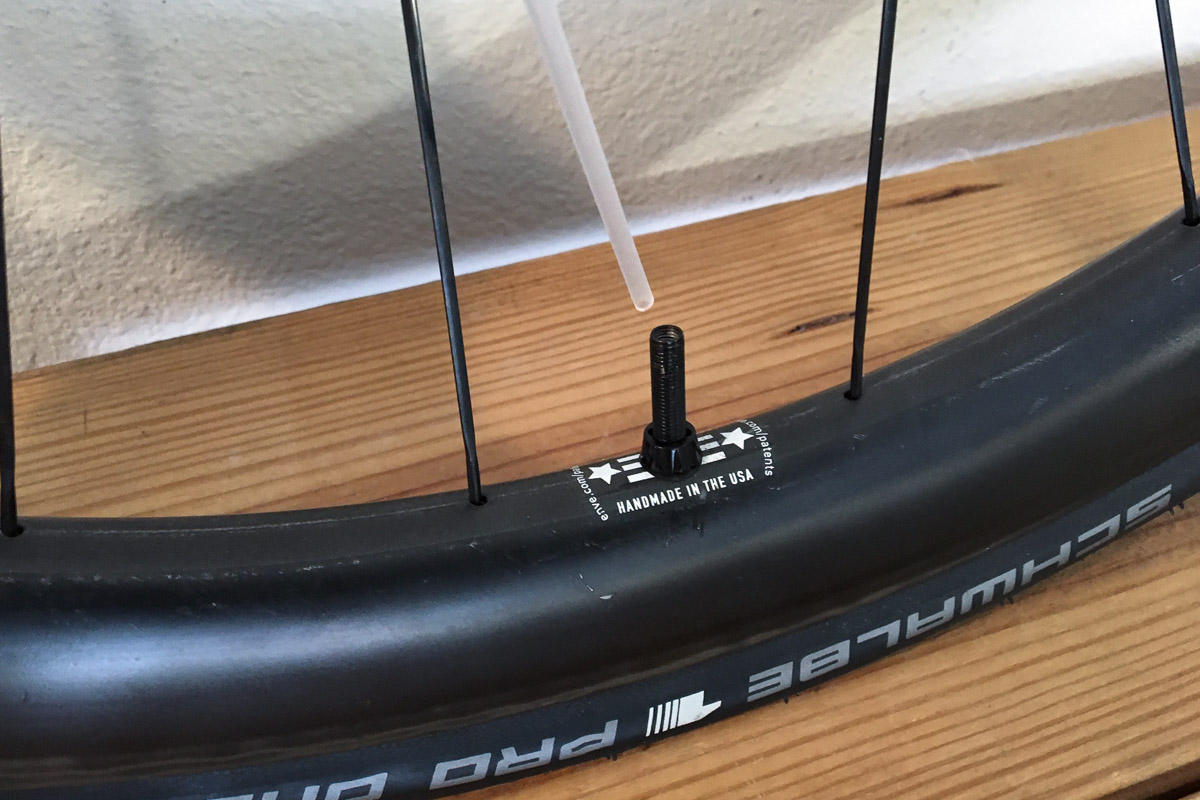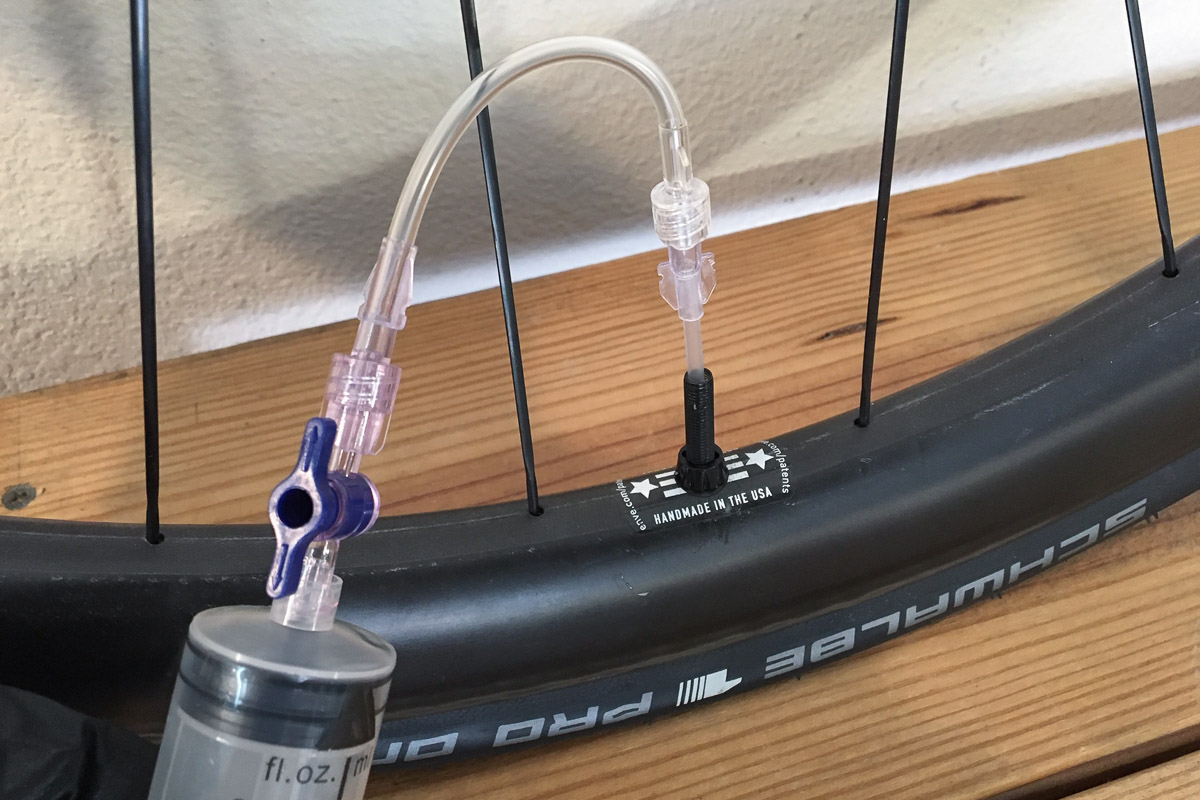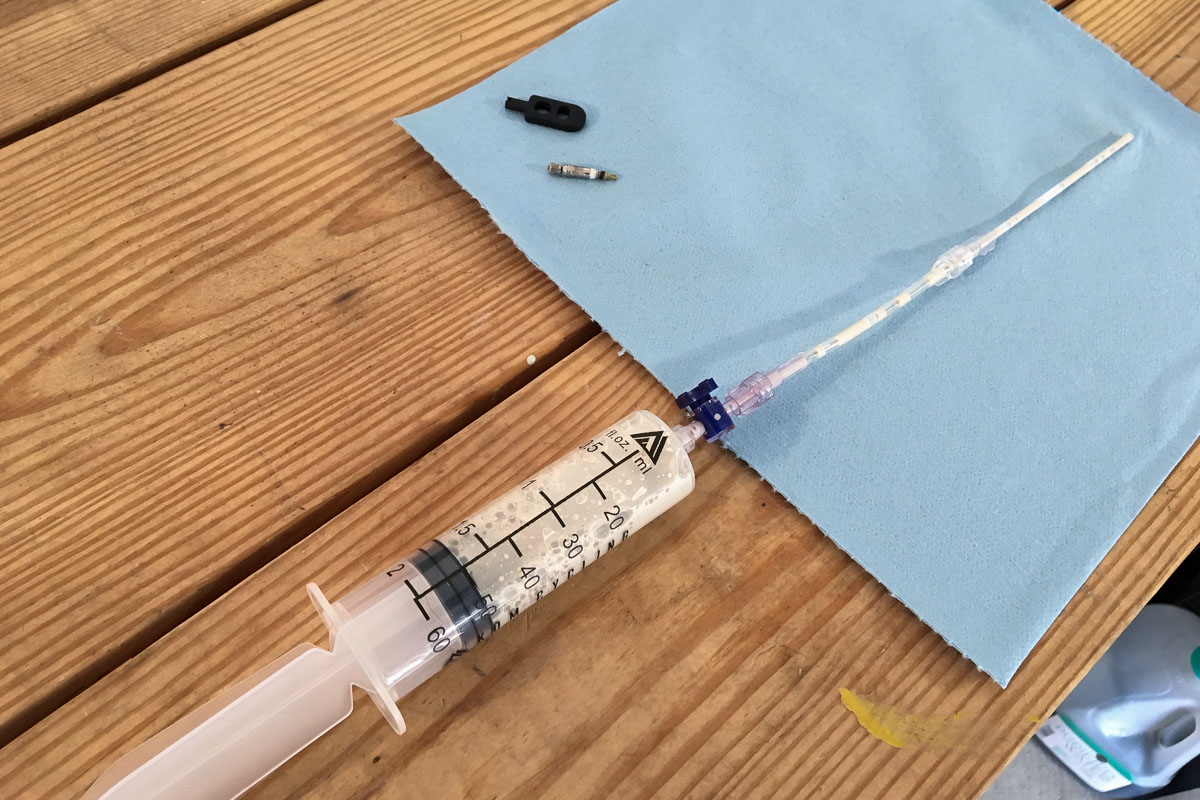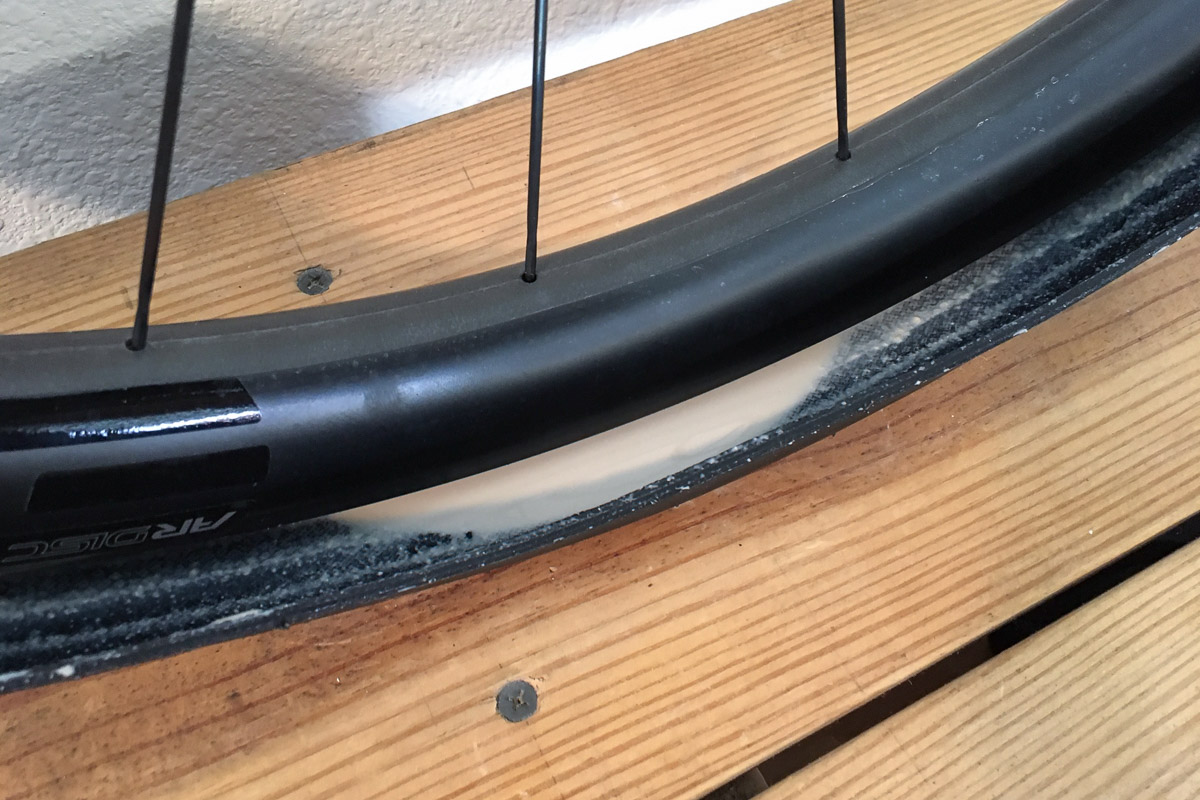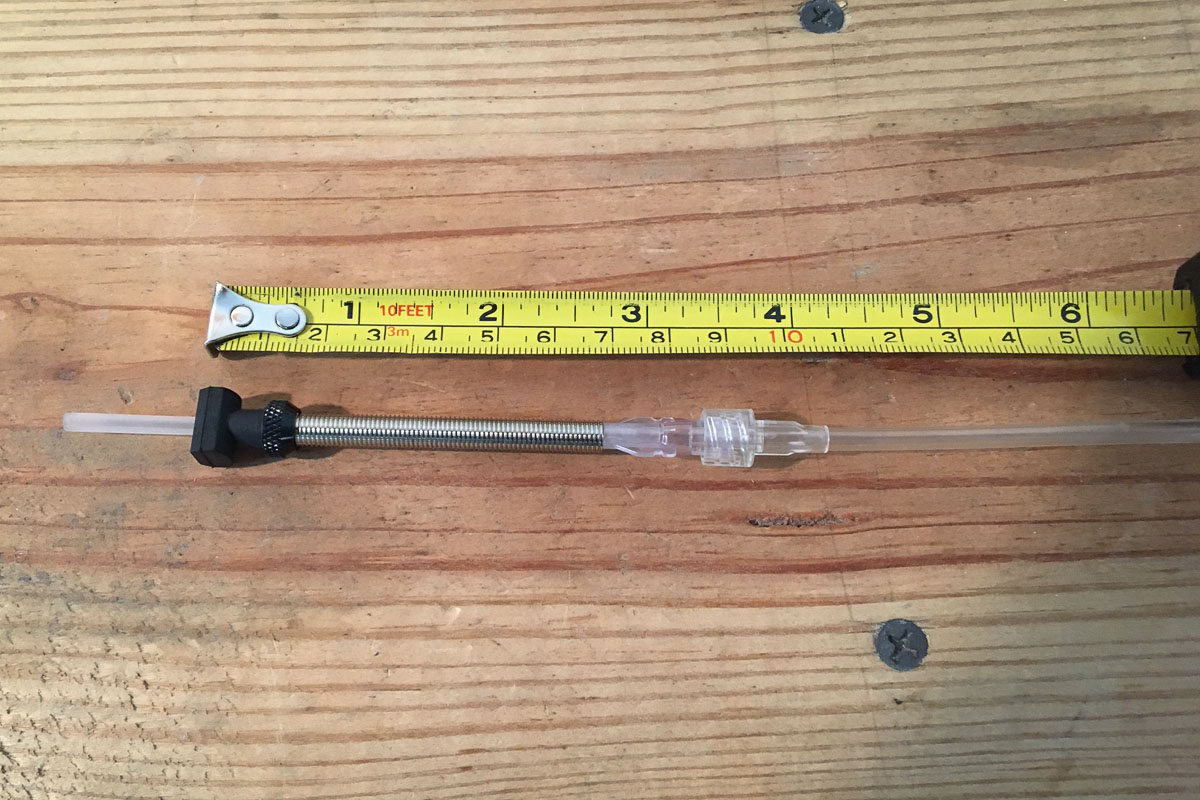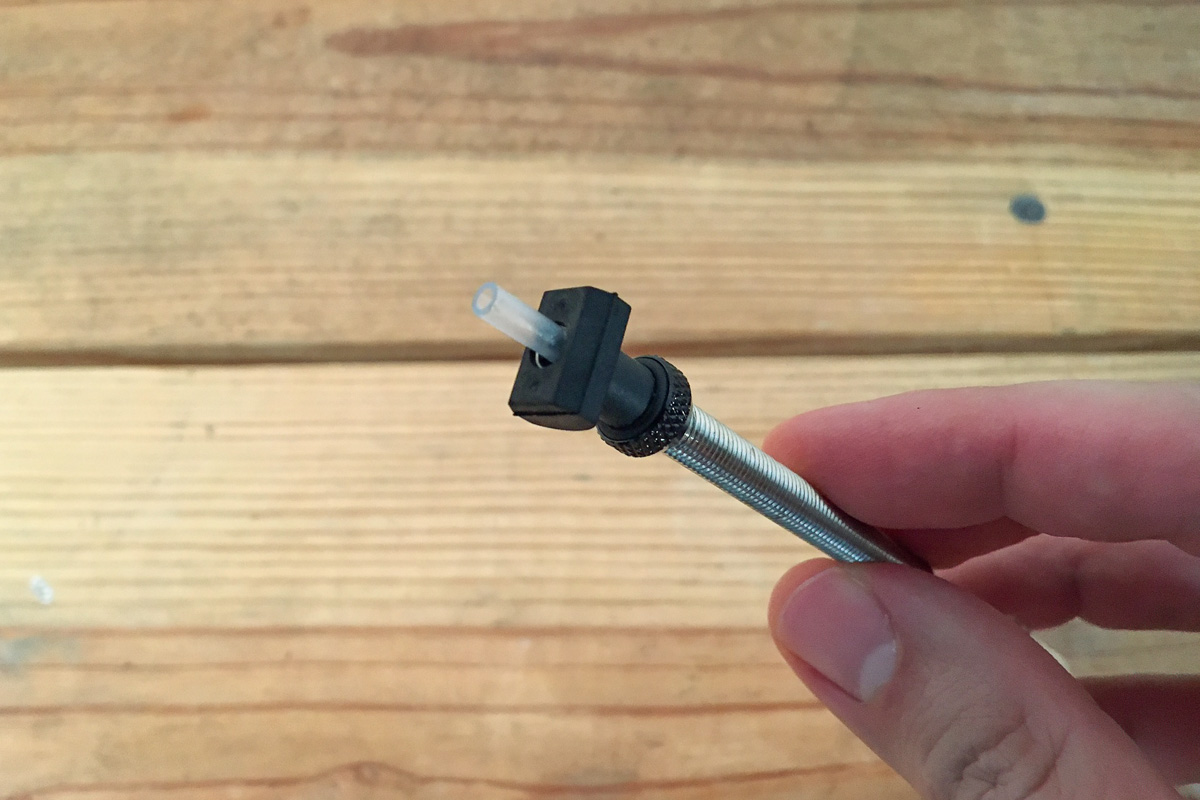We review the sealant injector system from KOM Cycling. After removing your valve core, a thin tube goes all the way down into your tire to install or remove sealant with no mess. The best part? It only costs $12, and works with most sealants and valves.
KOM Cycling tire sealant injector review
Tubeless gadgets and sealants are multiplying by the day, and KOM is in the game with a new budget-friendly and useful injection tool. We got our hands on one to try for ourselves, injecting and removing sealant from two different wheel sets. Note that, while we used it for tubeless tires, it will also work with inner tubes, or almost any valve with a removable core.
Why inject sealant all the way into the tire? Some injectors push sealant through the valve core (without removing it). This requires a very low-viscosity sealant that may not plug holes as effectively, and also tends to leave a lot of sealant residue inside the valve and core (which will sputter out at you during inflation). Others require removal of the core, but still leave a lot of residue inside the valve stem. Injecting directly to the tire eliminates these issues.
The biggest benefit of the KOM design, however, is the ability to remove sealant before removing your tire – eliminating virtually all of the mess.
There are five pieces in the kit: the syringe, the valve core removal tool, and three tubing pieces. The kit originally only used the two longer pieces of tubing, but they added a valve (above, bottom-left), which can manually stop the flow of sealant.
The syringe has a 60ml capacity, making it appropriate for road and gravel tires, but large capacity MTB and fat bike tires will require multiple injections (and KOM hinted that they’re working on new products to address this).
All of the pieces easily thread together – but be sure to avoid over-tightening them, Hulk (plastic can crack). Why not just manufacture it all in one piece? Just a guess, but logic says it’s to reduce the size of packaging for less waste and cheaper shipping.
Above: The fully assembled injector.
The basic kit includes a plastic valve core tool, but you can upgrade to aluminum for a few dollars more. My advice: go with the upgrade version. The plastic one works fine, but I found it started to round out on the inside after several uses (it has flats to match the shape of the valve core).
In the above photos, I was removing sealant from a set of ENVE SES AR 3.4 wheels with Schwalbe Pro One 28mm tires. KOM only recommends using low-ish viscosity sealants that don’t use large particles, such as Stan’s, Orange Seal, Finish Line, Caffelatex, and Slime tubeless sealant.
About 30ml of sealant came out, with a bit of residue left behind. Don’t forget to rinse the injector out with water after use, to keep sealant from drying and clogging the tubing.
One possible hazard to note is that long valve stems can potentially inhibit your ability to remove all of the sealant. The valve above is from DT Swiss, and measures about 70mm in total length. With an 80mm or longer valve, the injector straw would not reach all the way down to the bottom of the tire, meaning that you couldn’t remove as much sealant.
Speaking of valve stems, KOM Cycling representatives said that their injector is compatible with most valves (one notable exception is E*thirteen). I measured the outside diameter of the injection tube at about 3mm, so you want to be sure that the inside diameter of your valve is at least 3mm.
My verdict? The KOM Cycling sealant injector is $12 well spent. It works exactly as advertised, and made for a mess-free job. I will be using this injector for every tubeless tire removal in the future, which normally wastes sealant and causes a mess.

